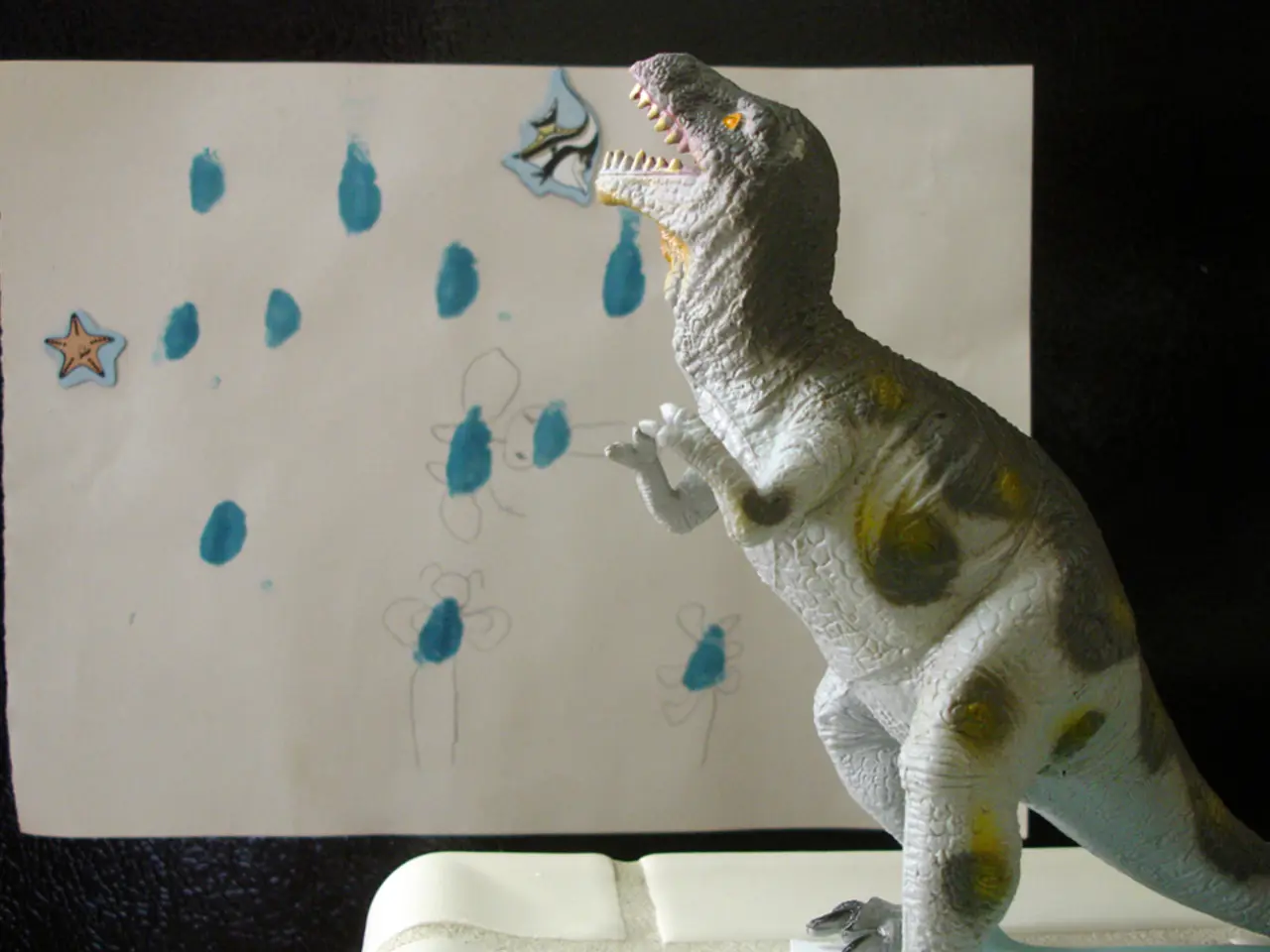Researchers Examined a Dinosaur's Larynx, Unveiling a Chirp Instead of a Growl
In a groundbreaking discovery, scientists have uncovered evidence suggesting that non-avian dinosaurs may have possessed complex vocal anatomy capable of producing bird-like sounds. This revelation comes from the fossilized remains of Pulaosaurus qinglong, an early neornithischian dinosaur discovered in northeastern China.
Pulaosaurus qinglong is a significant find for several reasons. Firstly, it belongs to one of the earliest-diverging neornithischian dinosaurs, a group far from the bird lineage. This implies either convergent evolution or a more ancient common ancestor with such vocal traits, dating back over 230 million years.
Secondly, the well-preserved laryngeal bones of Pulaosaurus are only the second instance of fossilized voice box structures in dinosaurs. This unprecedented insight into dinosaur vocal anatomy enables us to challenge the existing notion that sophisticated vocal organs like the syrinx evolved only in avian lineages after splitting from other dinosaurs.
The larynx of Pulaosaurus shows elongated, leaf-shaped cartilage structures resembling those in modern birds. These bird-like features challenge the status quo, raising the possibility that these sound-producing capabilities may have appeared earlier and been overlooked.
Together with other research, such as comparative studies of vocalization mechanisms in birds and crocodilians (modern dinosaur relatives), the evidence favours the hypothesis that many dinosaurs vocalized using closed-mouth calls or resonant low-frequency sounds rather than open-mouth roaring.
This discovery enriches our understanding by directly linking preserved vocal structures to potential vocalization modes in non-avian dinosaurs, supporting the idea that bird-like sound production has deep evolutionary roots extending well before the rise of birds themselves.
The study describing Pulaosaurus was published in the journal PeerJ. The fossil, designated IVPP V30936, is almost entirely intact, a rare find in dinosaur paleontology. Pulaosaurus lived in the thick forests of the Yanliao Biota region in northeastern China, a region that has yielded detailed dinosaur fossils, including feathered proto-bird Anchiornis and bat-winged Yi qi.
The species name, qinglong, refers to the town in Hebei Province where the fossil was found. Pulaosaurus is one of the earliest-diverging neornithischians ever found, placing it far from the theropod lineage that led to birds. The anatomical detail of the preserved arytenoid bones allowed scientists to reconstruct aspects of how Pulaosaurus may have breathed and vocalized.
Interestingly, a similar vocal structure was discovered last year in Pinacosaurus, a heavily armored ankylosaur that lived tens of millions of years after Pulaosaurus. This finding complicates the timeline of when the syrinx evolved.
The discovery of Pulaosaurus helps us better understand the evolutionary history of dinosaur vocal anatomy, opening up new questions about the presence of similar structures in other early dinosaurs and the potential earlier evolution of the syrinx.
- The research on Pulaosaurus qinglong's fossilized remains indicates that non-avian dinosaurs may have had complex vocal anatomy, challenging the common belief that sophisticated vocal organs like the syrinx evolved only in avian lineages.
- The laryngeal bones of Pulaosaurus exhibit elongated, leaf-shaped cartilage structures similar to those in modern birds, suggesting that bird-like sound production might have appeared earlier than previously thought.
- Future studies, such as comparative research on vocalization mechanisms in birds and their relatives, could shed light on the vocalization modes of other early dinosaurs and possibly clarify the origins of the syrinx.
- The evolution of dinosaur vocal anatomy is a complex issue, and the discoveries of vocal structures in dinosaurs like Pulaosaurus and Pinacosaurus highlight the need for continued research in this area, especially regarding the presence of such structures in other early dinosaurs and the potential earlier evolution of the syrinx.




